October 12th, 2015 · No Comments · Uncategorized
Paul Krugman used to be an economist. Today he writes for the NYTimes as “The Conscience of a Liberal”, which has his editorial commentaries generally aligning with popular folk economic beliefs.
As one would expect, examples abound of apparent contradictions with what economist Krugman advocated 20 years ago, and what folk economist Krugman advocates today. The most recent example of note is his 180 degree dismissal of the law of supply and demand as forces related to wages.
I would like to suggest that what Krugman is exhibiting is an example of extreme rationality — that is, a strong combination of both epistemic and instrumental rationality. See my post on the topic here.
Krugman (and Stephen Pinker) see how the world really works (epistemic rationality). Unlike language, economics is not intuitive and one swims upstream trying to change the “economically uninformed prejudices of the man-in-the-street”. Swimming upstream is not rational given that swimming downstream is far more productive.
In addition, Krugman takes actions that fall clearly under the heading of instrumental rationality — that is behaving in the world so that you get exactly what you most want, given the resources (physical and mental) available to you.
I would advise those who don’t understand Krugman’s “flip-flops” to read up on the writings of Keith Stanovich.
Tags:
October 12th, 2015 · No Comments · Uncategorized
“Perspective is worth 80 IQ points.”
– Alan Kay
There has been a lot of ink (pixels?) spilled over the years regarding the phenomenon where (presumably) high IQ academics and/or intellectuals appear to be prone to profound and surprising errors in judgement.
Clever sillies: why high IQ people tend to be deficient in common sense has been the most quoted paper covering this topic. The author concludes that:
“an increasing relative level of IQ brings with it a tendency differentially to over-use general intelligence in problem-solving, and to over-ride those instinctive and spontaneous forms of evolved behavior which could be termed common sense… I further suggest that this random silliness of the most intelligent people may be amplified to generate systematic wrongness when intellectuals are in addition ‘advertising’ their own high intelligence in the evolutionarily novel context of a modern IQ meritocracy.”
A striking example of this occurred a few years back when I (in the role of Cassandra) witnessed an entire community of academic overachievers get completely and utterly hornswoggled (by their own admission) by crew of public-school types who planned to pave over their neighborhoods. In a move worthy of “these aren’t the droids you’re looking for” the brainiacs were guided in a direction that utterly guaranteed that the impact on their way of life would be maximized. Think lambs to the slaughter. (“You can achieve so much more if you come up with an alternative” is priceless.)
I’ve never been completely satisfied with assertion that it’s a lack of “common sense” at play here. Rhetorically its unpersuasive to urban elites because it rings of a corn-pone, flyover-state mentality. Also at play is that it’s common sense that if you are nice to someone, they’ll be nice to you (the fatal flaw at play in the scenario described above.) It’s also common sense that that the worlds supply of oil is finite, so the inane notion of “Peak Oil” can seem perfectly reasonable.
There’s a promising framework which moves us beyond the whole “common sense” thing and into a scenario that IMHO captures the reality better. At its center is the term “Dysrationalia”. The Book What Intelligence Tests Miss: The Psychology of Rational Thought, Keith Stanovich of Durham University discusses that the correlation between I.Q. and rationality is low and that I.Q. tests fail to assess traits that most people associate with “good thinking.”
In “On the Distinction Between Rationality and Intelligence: Implications for Understanding Individual Differences in Reasoning” Stanovich provides a detailed 16-page PDF overview.
How is rationality defined? In the PDF linked above, Stanovich writes:
“Cognitive scientists recognize two types of rationality: epistemic and instrumental. Epistemic rationality concerns how well beliefs map onto the actual structure of the world. It is sometimes called theoretical rationality or evidential rationality…The simplest definition of instrumental rationality is as follows: behaving in the world so that you get exactly what you most want, given the resources (physical and mental) available to you.”
Informally, I’ve been describing complete rationality as:
* Understanding how the world really works (department of transportation employees want above all else to build big highways that they’ve designed, and legislators don’t vote for “best” options)
and:
* Taking action in your own best interest (avoiding choices that ensure your neighborhood becomes a concrete jungle)
Bottom line: Don’t confuse “smart” with rational. They are very different and not well aligned.
Tags:
July 10th, 2015 · No Comments · Uncategorized
I am hosting three panels and a Dent/Tweethouse reception this year, hope to see you in sunny San Diego!
Here are my sessions:
Thursday, July 9 • 2:00pm – 3:00pm
Building the Holodeck
Friday, July 10 • 3:00pm – 4:00pm
Rise of Aqua(wo)man
Saturday, July 11 • 5:00pm – 6:00pm
Future Toys: How AI, Robotics, Sensors, and Mobile Are Changing Play
Thanks to the support of our friends on the Vuforia team at Qualcomm, we are ecstatic to be back at Stone Brewing Tap Room in San Diego to host our “VR Lounge” on Thursday 7/9.
At the reception, Emblematic Group will be showing their “holodeck”-style walk-around replica of the Star Trek Next Generation Bridge * Jason Crusan (Director, Advanced Exploration Systems Division at NASA will show how VR is enabling their Phobos Hopper project * Qualcomm will be showing demos with Vuforia, their mobile vision platform that lets developers combine AR and VR to develop immersive mixed reality experiences..
Get your VR Lounge tickets here.
Tags:
December 4th, 2014 · No Comments · Uncategorized
 Headlines today include “Gas drops below $2 in Oklahoma, prompting price war.” and WTI Crude closed at $66.46 a gallon. Inflation adjusted, that equates to $54.67 in 2005 dollars. 2005 is when The Oil Drum launched, and according to their own earliest writings, $55.00 a barrel was the going rate. Bottom line, the price of oil is lower than when these guys started claiming “decreasing supply at ever increasing prices.”
Headlines today include “Gas drops below $2 in Oklahoma, prompting price war.” and WTI Crude closed at $66.46 a gallon. Inflation adjusted, that equates to $54.67 in 2005 dollars. 2005 is when The Oil Drum launched, and according to their own earliest writings, $55.00 a barrel was the going rate. Bottom line, the price of oil is lower than when these guys started claiming “decreasing supply at ever increasing prices.”
Over a year ago I blogged triumphantly about how the scientistic, Mathusian worldview had again suffered a crushing defeat against the those who think like economists.
I’ve always thought it odd that those embrace a field defined as the study of the allocation of scare resources are viewed as being at some kind of disadvantage over those who study what a resource is made of/how it’s extracted.
This thinking was illustrated by peak oiler Dave “Heading Out” Summers way back in 2005:
I think this is where we see the basic disagreement between the economists who predict based on theoretical models and historic behavior, and the scientists and engineers who realize that you cannot legislate or theorize the presence of oil that is not there, and have it show up on the market two weeks later.
Plus this little gem from Summers — classic denial of how supply and demand (not to mention incentives) work:
Do you think that $4/gal would actually change some habits? I truly doubt it.
Riiiiiight. The elasticity of demand for gasoline is… zero. Try -0.26.
Thanks for playing.
Well, here we are nine years later, and we got to test how $4/gal worked. As some of us already knew, demand is highly responsive to oil price changes. As one Saudi oil minister put it: “My main worry was that if we increased the price of oil too much we would merely reduce the demand for it in future.”
So, as Econ 101 dictates — the price went up, the amount demanded went down, substitutes were sought, and innovations were pursued. Once again, the economist trumps the scientist.
Tags:
In a stunning victory over the Republican incumbent House Majority Leader Eric Cantor, Economics professor(!) Dr. Dave Brat will face off against Sociology professor Democrat Dr. Jack Trammell in November.
While the 7th district in Virginia certainly leans Republican, Brat may have a tough go of it. Why? The language problem. The language of sociology is probably better aligned with the typical voter.
In the classic piece “The Economics/Sociology Phrase Book”, Jeffrey A. Smith and Kermit Daniel outline the difference between the two disciplines.
To best prepare for the Brat vs Trammell debate, Read the whole thing. I provide an abridged version below. A few relevant links are provided, (including a mea culpa, evidence of my own failure to resist non-economic thinking)
Section I: Sociology to Economics
| Sociological Term or Phrase |
Economics Term or Phrase |
| rational behavior |
The use of decision rules based on explicit mathematical calculation, combined with a utility function in which monetary wealth is the only argument. |
| need |
want |
| different value orientations |
laziness |
| is correlated with |
is correlated with |
| determines |
is correlated with |
| is caused by |
is correlated with |
| structural |
institutional |
| endogenous |
endogenous |
| exogenous |
endogenous |
| position in the urban hierarchy |
what size town you live in |
| causal nexus |
general equilibrium |
| exploitation |
contract |
| discrimination |
wage differential |
| low wage jobs |
low productivity workers |
| corporate elite |
high productivity workers |
| patriarchy (I) |
sexual division of labor based on technological differences |
| patriarchy (II) |
family |
| bourgeois sexual privatism |
monogamy |
| non-normative family arrangements |
single motherhood |
| model (I) |
explanation |
| model (II) |
diagram involving circles and arrows |
| Marxist |
Marxist |
| socialist |
Marxist |
| communist |
Marxist |
| Communist |
Marxist |
| government |
state |
| profit maximization |
revenue maximization |
| profit maximizing behavior |
discrimination |
| monopolist |
large firm |
| unemployment |
leisure |
| labor force detachment |
leisure |
| macroeconomics |
Keynesian demand management |
| conservative macroeconomics |
neoclassical economics |
| neoclassical economics |
economics |
| Marxist economics |
sociology |
Section II: Economics to Sociology
Section III: My Addition
| Economics Term or Phrase |
Sociological Term or Phrase |
| Employer |
Monopsonist |
Tags:
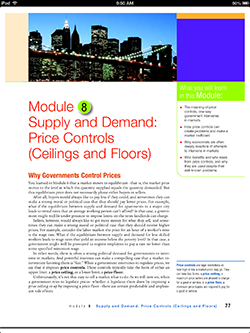 Note: This article refers to Professor Krugman, the economist and textbook author. Apparently there is a non-economist columnist with the same name. I apologize for the confusion.
Note: This article refers to Professor Krugman, the economist and textbook author. Apparently there is a non-economist columnist with the same name. I apologize for the confusion.
Four days ago, the LA Times posted an article with the headline: “VA investigation turns up widespread problems with wait times.” In the piece, the VA is quoted as finding that “inappropriate scheduling practices are systemic.”
They’re right. It’s not a case of Obama or Shinseki being “defeated by bureaucracy.” It’s also not “a crisis of leadership.”
It’s systemic, and price ceilings are central to that system. Mandating below-market prices for the drugs and services they purchase and provide is largely how the VA is able to achieve “efficient” provision. Just Google “The Federal Ceiling Price (FCP)” and see what comes up.
Laymen and politicians have no issue with price ceilings. They tend to rely on folk economics (the intuitive economics of untrained people) to drive their policy choices. To them, the notion of “just price” is very appealing and even I have been guilty of succumbing to its charms.
To get beyond the simplistic thinking of folk econ, and to learn how price ceilings really work, I recommend the text “Essentials of Economics” by Krugman, Wells and Graddy. The most recent edition was published in 2011 (three years ago), but I am certain that in previous editions Krugman et al also outlined why price ceilings can’t lead to creating “The highest performing major system of providers that exists.”
Krugman sets us straight on what happens when politicians try to salve voter preferences for “just” prices by mandating ceilings by fiat. The default result is allocation by wait times (emphasis mine):
Another reason a price ceiling causes inefficiency is that it leads to wasted resources: people expend money, effort, and time to cope with the shortages caused by the price ceiling. Back in 1979, U.S. price controls on gasoline led to shortages that forced millions of Americans to spend hours each week waiting in lines at gas stations. The opportunity cost of the time spent in gas lines—the wages not earned, the leisure time not enjoyed—constituted wasted resources from the point of view of consumers and of the economy as a whole. Because of rent control, the Lees will spend all their spare time for several months searching for an apartment, time they would rather have spent working or engaged in family activities.
Another common distortion is simply to reduce quality to better align with the mandated price.
Yet another way a price ceiling causes inefficiency is by causing goods to be of inefficiently low quality. Inefficiently low quality means that sellers offer low-quality goods at a low price even though buyers would rather have higher quality and are willing to pay a higher price for it.
This Econ 101 chart from the Krugman text says it all. Price ceilings cause amount demanded to rise and amount supplied to fall, resting in a classical shortage. How do you deal with the mismatch? Make ’em wait. Waiting not allowed? Make ‘em wait anyway.
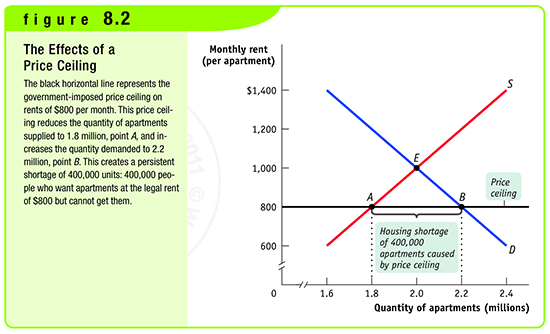
Why do our wise leaders do this to us? Krugman has the answer (emphasis mine):
A last answer is that government officials often do not understand supply and demand analysis! It is a great mistake to suppose that economic policies in the real world are always sensible or well informed.
So, the next time someone makes claims to the wonders of government efficiency, consider these wise words from the great professor (emphasis mine):
The alternative to a market economy is a command economy, in which there is a central authority making decisions about production and consumption. Command economies have been tried, most notably in the Soviet Union between 1917 and 1991. But they didn’t work very well. Producers in the Soviet Union routinely found themselves unable to produce because they did not have crucial raw materials, or they succeeded in producing but then found that nobody wanted their products. Consumers were often unable to find necessary items—command economies are famous for long lines at shops.
Market economies, however, are able to coordinate even highly complex activities and to reliably provide consumers with the goods and services they want. Indeed, people quite casually trust their lives to the market system: residents of any major city would starve in days if the unplanned yet somehow orderly actions of thousands of businesses did not deliver a steady supply of food. Surprisingly, the unplanned “chaos” of a market economy turns out to be far more orderly than the “planning” of a command economy.
Oh, BTW it’s not just the VA. The efficient systems of France, Sweden and Canada all suffer from long wait times too.
Tags:
Did someone say “Days of Future Past”? The newest X-Men movie follows a story arc that I followed closely during the Reagan administration.
Confident that this was an enduring story line that would stand apart as a classic, I started buying multiple issues way back when. See my three copies below. A 50 cent investment per issue now has a market value of $150.00. That calculates to a ROI of over 18% a year.
This return beats Apple stock significantly. Since it’s 1980 issue to now, (from $3.74 to $594), that spectacular return averages only 16% per year.
To match the X-Men ROI, Apple stock would have to now be priced at $1,126.

Tags:
Tags:

OK, a quick clarification — Virginia Postrel corrected me on this a few weeks back. Econ 101 is typically a Macro Econ class (or “Voodoo” as I like to call Macro…) It’s Econ 201 (Intro to Microeconomics) that really matters here.
Flashback to Jan 6, 2014: “UAW sets up organizing committee at Tesla’s Fremont factory”
See my Jan 8, 2014 response on Twitter: “Why Tesla will soon be/already is exploring production in China.”
What does CNN say on April 22? “Tesla to build cars in China.”
I’d like to claim that my massive intellect came into play here, but Greg Mankiw’s Principles of Microeconomics text and a few firing synapses were all that anyone needed (and all I have left…) Here are a few relevant passages (emphasis mine):
“A union is a type of cartel. Like any cartel, a union is a group of sellers acting together in the hope of exerting their joint market power…Because a strike reduces production, sales, and profit, a firm facing a strike threat is likely to agree to pay higher wages than it otherwise would. Economists who study the effects of unions typically find that union workers earn about 10 to 20 percent more than similar workers who do not belong to unions.”
“Goods with close substitutes tend to have more elastic demand because it is easier for consumers to switch from that good to others. For example, butter and margarine are easily substitutable. A small increase in the price of butter, assuming the price of margarine is held fixed, causes the quantity of butter sold to fall by a large amount. By contrast, because eggs are a food without a close substitute, the demand for eggs is less elastic than the demand for butter.”
Before, Jan 6:
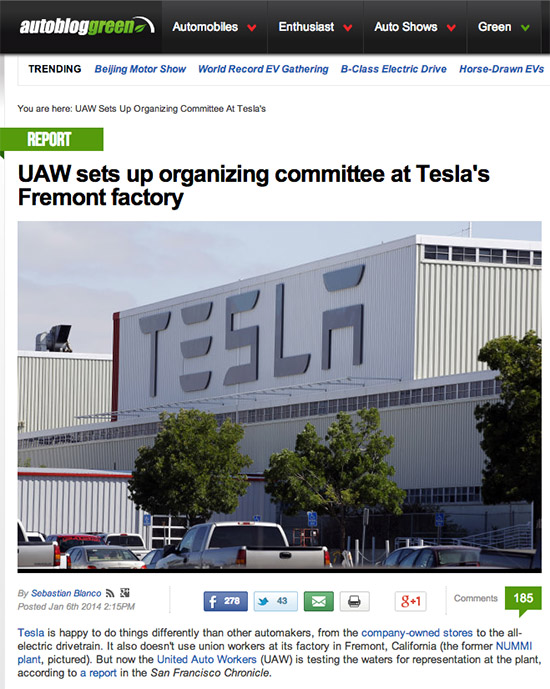
After, April 22:
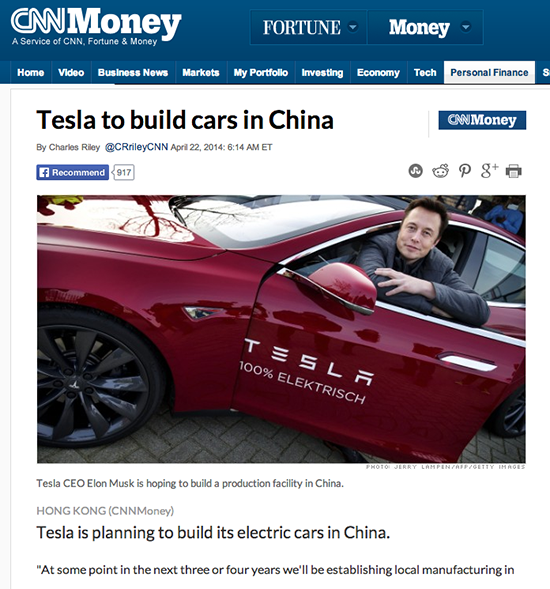
Tags:
In anticipation of our March 2014 Dent Conference, we made the drive from Seattle to Sun Valley Idaho. This year we had the luxury of being able to take our time and make lots of fun stops along the way. Also we were fortunate to be driving a shiny new Buick Enclave, which turned out to be the roomiest and most comfortable vehicle we’ve ever driven to Idaho.
One of our mandates as we drove from Seattle to Ketchum Idaho was to pick up several cases of wine that we felt would suit our conference attendees. Since we drive right past Red Mountain on our way, it was a perfect place for us to stop and do some shopping.
The first destination on our list was Hedges Family Estate. A few years back Hedges hosted us and several of our Blog Business Summit speakers to a dinner and tasting at their Prosser property, and we could not wait to return.
The estate is situated right on Red Mountain, and even the parking lot provides a sublime view:
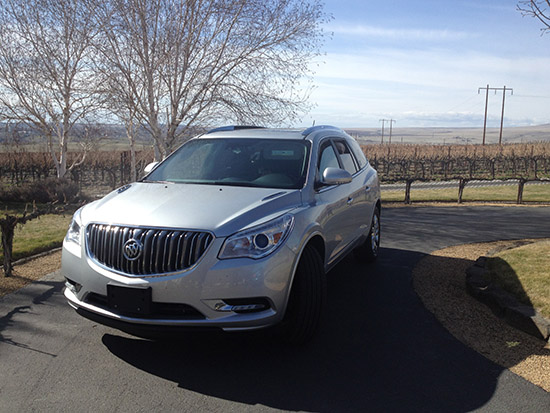
Yes, that’s Brody our Wheaten Terrier (and road trip enthusiast) poking his nose out of the window. A better shot of him here:

Here was Brody’s view of the Chateau from the Buick :

Once inside we were greeted by Estate Liaison, Deborah Culverhouse. I asked Deborah to steer us toward some special bottles.
One of the standouts was the 2006 Red Mountain Fortified (RMF), which is in very limited supply. It’s made with 100% estate grapes and as is the case with traditional port wines, it’s fortified with brandy. Great for matching with dessert (particularly gingerbread) or with a sharp blue cheese.
Robert Scoble tasted it at our Il Naso dinner and had this to say:
Tags:

 Headlines today include
Headlines today include  Note: This article refers to Professor Krugman, the economist and textbook author. Apparently there is a non-economist columnist with the same name. I apologize for the confusion.
Note: This article refers to Professor Krugman, the economist and textbook author. Apparently there is a non-economist columnist with the same name. I apologize for the confusion.






